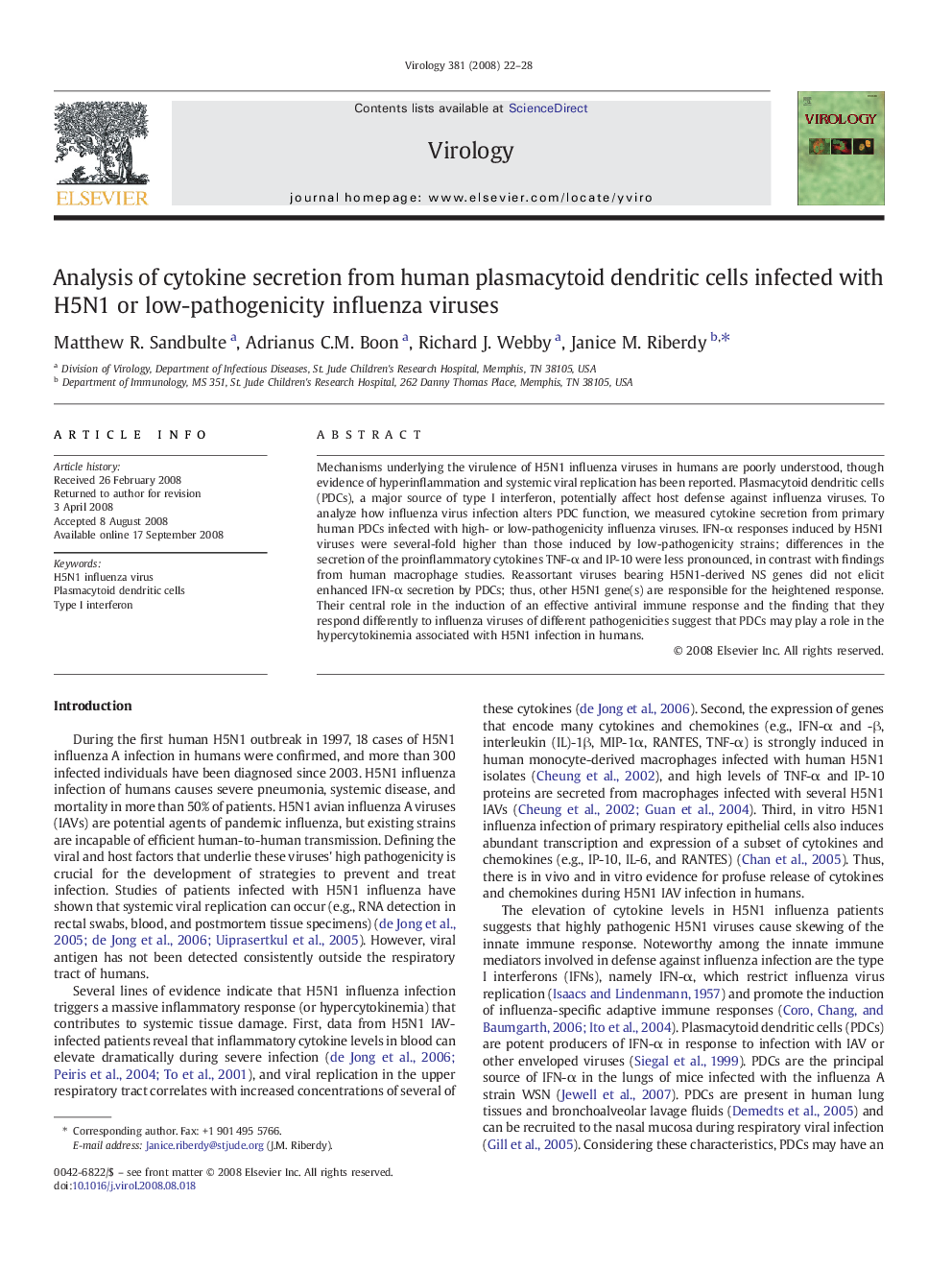| Article ID | Journal | Published Year | Pages | File Type |
|---|---|---|---|---|
| 3425723 | Virology | 2008 | 7 Pages |
Mechanisms underlying the virulence of H5N1 influenza viruses in humans are poorly understood, though evidence of hyperinflammation and systemic viral replication has been reported. Plasmacytoid dendritic cells (PDCs), a major source of type I interferon, potentially affect host defense against influenza viruses. To analyze how influenza virus infection alters PDC function, we measured cytokine secretion from primary human PDCs infected with high- or low-pathogenicity influenza viruses. IFN-α responses induced by H5N1 viruses were several-fold higher than those induced by low-pathogenicity strains; differences in the secretion of the proinflammatory cytokines TNF-α and IP-10 were less pronounced, in contrast with findings from human macrophage studies. Reassortant viruses bearing H5N1-derived NS genes did not elicit enhanced IFN-α secretion by PDCs; thus, other H5N1 gene(s) are responsible for the heightened response. Their central role in the induction of an effective antiviral immune response and the finding that they respond differently to influenza viruses of different pathogenicities suggest that PDCs may play a role in the hypercytokinemia associated with H5N1 infection in humans.
